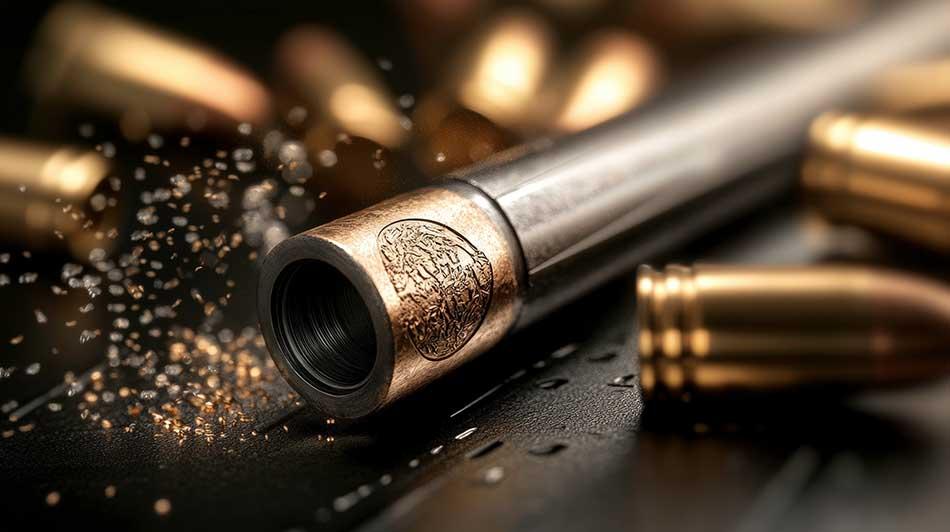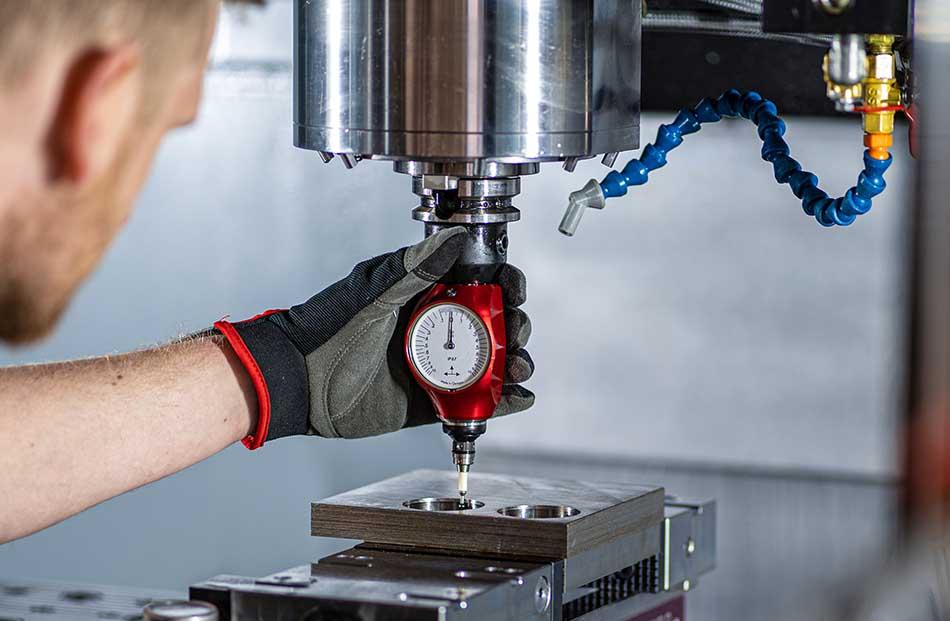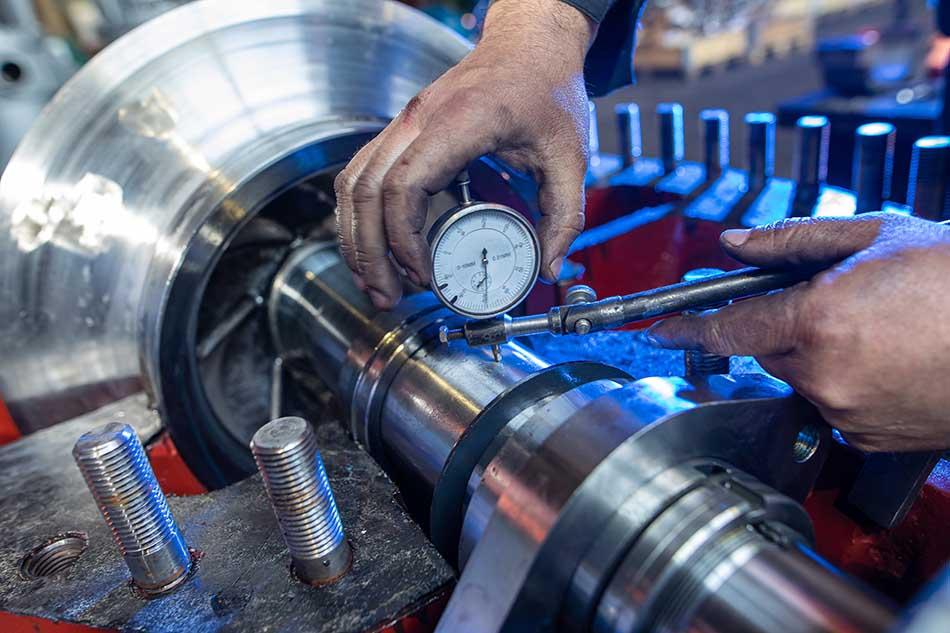Choosing a Water-Cooled CNC Router Spindle
A CNC router spindle is one of the most important components of any CNC machine, directly affecting cutting precision, machine longevity, and overall performance. Whether you’re cutting wood, plastic, or metal, maintaining the correct spindle temperature is essential to ensure smooth operation, high-quality finishes, and minimal tool wear.
Why CNC Spindle Cooling Matters
Water-cooled CNC spindles have grown in popularity among manufacturers and machinists who require longer run times, greater precision, and reduced heat-related tool wear. By keeping spindle temperatures stable, these systems prevent overheating, minimize thermal expansion, and help tools maintain sharpness for longer periods.
At In-House CNC, we specialize in spindle repairs, maintenance, and cooling system servicing, and we’ve seen firsthand the benefits and challenges of water-cooled spindles. In this guide, we’ll explore how water-cooled CNC spindles work, why they are the preferred choice for many manufacturers, and what maintenance they require to operate at peak performance.
What Is a Water-Cooled CNC Router Spindle?
One of the biggest decisions CNC operators face is choosing between an air-cooled and a water-cooled spindle. While air-cooled spindles rely on fans to regulate temperature, water-cooled spindles use liquid coolant to dissipate heat more efficiently. This difference in cooling methods can significantly affect performance, maintenance requirements, and overall machine reliability.
A water-cooled CNC spindle uses a liquid cooling system to dissipate heat efficiently during high-speed machining. Unlike air-cooled spindles that rely on fans to push air across their surface, water-cooled spindles use a continuous loop of circulating coolant to maintain consistent operating temperatures.
This type of spindle is ideal for high-precision machining operations, where heat buildup can negatively impact accuracy, tool life, and overall machine performance. The ability to maintain stable temperatures allows manufacturers to run longer machining cycles without compromising precision or increasing wear on cutting tools.
How It Works
The cooling system follows a closed-loop circulation process that effectively transfers heat away from the spindle:
- A pump circulates coolant through the spindle’s internal cooling channels.
- Heat from the spindle is absorbed by the coolant, preventing temperature spikes.
- The heated coolant exits the spindle and moves through a radiator or chiller, where it is cooled.
- Once cooled, the coolant is recirculated back into the spindle, maintaining an optimal temperature.
By continuously cycling coolant, water-cooled spindles keep temperatures stable, preventing overheating and ensuring optimal performance throughout long machining runs. This makes them particularly valuable for high-speed, high-precision applications where excessive heat could cause accuracy issues or rapid tool wear.
Advantages of Water-Cooled CNC Router Spindles
For machinists and manufacturers looking to optimize CNC router performance, a water-cooled spindle provides several advantages over air-cooled alternatives.
Superior Temperature Control
Maintaining consistent temperatures is crucial in precision machining. Water-cooled spindles dissipate heat more efficiently, preventing thermal expansion that can throw off accuracy. Since the spindle stays cooler, it maintains tight tolerances, ensuring that every cut is precise and consistent.
Extended Tool Life
Heat is one of the biggest contributors to premature tool wear. Cutting tools that operate at high temperatures tend to dull more quickly, leading to rougher surface finishes and increased replacement costs. A water-cooled spindle reduces heat buildup around the cutting area, allowing tools to stay sharp longer and improving cutting quality.
Quieter Operation
Workshops and manufacturing environments can be noisy, especially when multiple CNC machines are running simultaneously. Air-cooled spindles rely on fans that generate additional noise, while water-cooled spindles operate much more quietly. This reduces overall shop noise, creating a better working environment for operators.
Better for Long-Run CNC Operations
If your CNC router is running for extended periods at high speeds, a water-cooled spindle is the better choice. Air-cooled spindles can struggle to maintain temperature stability during continuous machining, which can lead to inconsistent performance or unexpected shutdowns. Water-cooled systems prevent these overheating issues, making them ideal for long-run, high-speed machining applications.
Choosing the Right Spindle for Your Needs
Deciding between an air-cooled or water-cooled spindle depends on the type of machining you do. If you need a quieter, more precise spindle that can handle long, uninterrupted machining sessions, a water-cooled CNC spindle is an excellent investment. However, if portability and low maintenance are more important, an air-cooled spindle may be the better choice.
Regardless of which spindle you choose, proper maintenance is essential to maximize its lifespan and maintain optimal performance. At In-House CNC, we provide expert CNC spindle repairs, cooling system servicing, and preventative maintenance to keep your machine running at its best.
Disadvantages of Water-Cooled CNC Router Spindles
While water-cooled CNC spindles have many benefits, they also come with some challenges that businesses should consider before making the switch. These spindles offer better cooling and longer tool life, but they also require more maintenance, additional equipment, and extra space. If not properly maintained, they can develop leaks, blockages, or pump failures that reduce performance and lead to costly repairs. Understanding these challenges will help operators decide if a water-cooled spindle is the right choice for their CNC machine.
Why Water-Cooled CNC Spindles Need Extra Equipment
Unlike air-cooled spindles, which only need a built-in fan, water-cooled spindles require a full cooling system. This system includes a pump, coolant lines, and either a radiator or chiller to keep the spindle from overheating. While this setup provides excellent cooling, it also takes up more space and requires routine maintenance to keep everything running properly.
If any part of the cooling system fails or becomes clogged, the spindle can quickly overheat, which may cause damage to the spindle bearings, cutting tools, and overall machine accuracy. Regularly checking the coolant system, hoses, and pump function is essential to prevent breakdowns.
Higher Maintenance Needs Compared to Air-Cooled Spindles
Water-cooled CNC spindles require more frequent maintenance than air-cooled models. The coolant needs to be changed regularly to prevent mineral buildup, contamination, and blockages. Over time, hoses and seals can wear out, causing leaks that reduce the effectiveness of the cooling system.
Without proper upkeep, coolant flow can slow down, leading to overheating and potential spindle failure. To avoid this, operators need to flush the coolant system, check for leaks, and replace worn hoses as part of a routine maintenance schedule.
Less Portable and More Difficult to Set Up
One major downside of water-cooled CNC spindles is that they aren’t as easy to move or install as air-cooled models. The extra cooling equipment adds weight and requires space for the pump, coolant lines, and radiator. If you have a small workspace or need to move your CNC machine often, a water-cooled spindle may not be the best choice.
Air-cooled spindles, on the other hand, are easier to install and require less maintenance since they don’t need external cooling systems. For businesses that frequently relocate their CNC machines, air-cooled spindles may be the more practical choice.
Common Problems with Water-Cooled CNC Spindles
Even with proper maintenance, water-cooled spindles can develop problems over time. Here are some common issues and how to prevent them.
Coolant Flow Blockages
If dirt, debris, or minerals build up in the coolant lines, they can restrict flow, reducing cooling efficiency and causing the spindle to overheat. To avoid this, operators should only use filtered water or special coolant solutions and flush the system regularly to remove any buildup.
Coolant Leaks
The hoses and seals in a water-cooled spindle system can wear out over time, leading to leaks that reduce cooling performance. If coolant levels get too low, the spindle may not stay cool, increasing the risk of overheating. To prevent leaks, operators should inspect all hoses and seals regularly and replace them when they show signs of wear or damage.
Pump or Radiator Malfunctions
If the coolant pump stops working, the spindle will overheat very quickly, potentially causing serious damage to the machine. The radiator or cooling fan could also fail, leading to poor heat dissipation. To prevent this, test the pump and radiator regularly to make sure they are working properly. Many operators keep a backup pump on hand in case of emergencies.
Air-Cooled vs. Water-Cooled CNC Spindles: Which One Is Right for You?
Both air-cooled and water-cooled spindles have advantages and disadvantages. The right choice depends on your specific needs.
| Feature | Water-Cooled Spindle | Air-Cooled Spindle |
|---|---|---|
| Cooling Efficiency | ✅ Excellent | ⚠️ Moderate |
| Noise Level | ✅ Quieter | ⚠️ Louder |
| Maintenance Needs | ⚠️ More Complex | ✅ Easier |
| Ideal for Long Runs | ✅ Yes | ⚠️ May Overheat |
| Portability | ⚠️ Less Portable | ✅ More Portable |
Who Should Choose a Water-Cooled CNC Spindle?
A water-cooled CNC spindle is best for high-speed, high-volume machining operations that require superior cooling. They are a great option for:
- Manufacturers who run long production cycles and need a spindle that stays cool for extended periods.
- Shops looking for quieter CNC operation, as water-cooled spindles produce less noise than air-cooled ones.
- Businesses that prioritize cutting precision, since cooler spindles help maintain accuracy over long runs.
- CNC operators who don’t mind extra maintenance, such as changing coolant, checking hoses, and cleaning the cooling system regularly.
However, if you move your CNC machine frequently, don’t want to deal with coolant system maintenance, or only run short machining cycles, an air-cooled spindle may be a more practical and cost-effective choice.
Get Expert CNC Spindle Support
A water-cooled CNC router spindle is an excellent investment for businesses that need high-speed, high-precision machining. However, proper maintenance is crucial to ensure long-term reliability and avoid costly repairs.
At In-House CNC, we specialize in spindle repairs, cooling system servicing, and preventative maintenance to keep CNC machines running at peak efficiency. Whether you need coolant system repairs, spindle rebuilds, or routine maintenance, our expert technicians can help.
📞 Call In-House CNC Today at (951) 540-4820 for Expert CNC Spindle Maintenance & Repairs!




